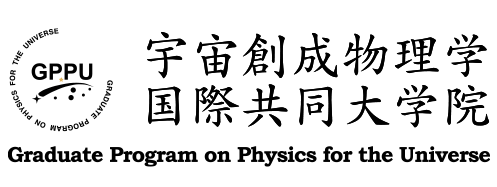GPPU Seminar
The search for the elusive KL → πνν with the KOTO detector by looking for nothing
Brian Beckford
(University of Michigan, Department of Physics)
Date
14:00-16:00, July 18th, 2019Place
Room N204, Science Complex C (H-04) mapAbstract
The KOTO experiment aims to help explain why we live in a matter dominant universe. It is believed that Charge-Parity (CP) violation is critical in this asymmetry, and studying where more CP violation can enter into the Standard Model (SM) is an exciting frontier for discovering new physics.
The KOTO experiment was designed to observe and study the KL → πνν decay. The Standard Model (SM) prediction for the mode is 2.4 x 10-11 with a small theoretical uncertainty [1]. An experimental upper limit of 2.6 x 10-8 was set by the KEK E391a collaboration [2]. The rare “golden” decay is ideal for probing for physics beyond the standard model. A comparison of experimentally obtained results with SM calculations permits a test of the quark flavor region and provides a means to search for new physics.
The signature of the decay is a pair of photons from the π0 decay and no other detected particles. For the measurement of the energies and positions of the photons, KOTO uses a Cesium Iodide (CSI) electromagnetic calorimeter as the main detector, and hermetic veto counters to guarantee that there are no other detected particles.
KOTO’s initial data was collected in 2013 and achieved a similar sensitivity as E391a result [3]. Since then, we completed significant hardware upgrades and had additional physics runs in 2015 at beam powers of roughly 24-40 kW. This presentation will present background and motivation for this study, new results from KOTO [4], and status of the ongoing search of detecting KL → πνν.
[1] C. Bobeth, A. J. Buras, A. Celis, and M. Jung, J. High Energy Phys. 04, 079 (2017).
[2] J. K. Ahn et al., Phys. Rev. D 81, 072004 (2010).
[3] J. K. Ahn et al., Prog. Theor. Phys. 021C01 (2017).
[4] J. K. Ahn et al., Phys. Rev. Lett. 122 no.2, 021802 (2019)
Point
GSP 1Contact: Yusuke Tanimura (tanimura [at] nucl.phys.tohoku.ac.jp)
